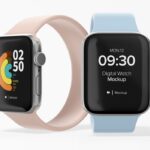Apple has taken a bold step forward with its latest iPhone lineup, particularly the iPhone Air, by introducing a trio of custom-designed chips: the A19 Pro, N1, and C1X. These chips mark a significant shift, giving Apple full control over the core components of its iPhones for the first time. With a strong focus on artificial intelligence (AI) and power efficiency, these advancements are set to redefine smartphone performance. Here’s a closer look at what these chips mean for Apple’s future and how they position the company in the competitive tech landscape.
1. Apple’s Custom Chips: A19 Pro, N1, and C1X
Apple’s new chips represent a major milestone in its quest for hardware independence. The A19 Pro is a system-on-a-chip (SoC) designed to prioritize AI workloads, featuring neural accelerators integrated into each of its six GPU cores. This enhances the iPhone’s ability to handle complex tasks like machine learning and 3D rendering. The N1 chip replaces Broadcom’s wireless and Bluetooth chips, which had been the standard in iPhones. It’s now used across the iPhone 17 lineup and the iPhone Air, improving Wi-Fi efficiency. The C1X modem, Apple’s second-generation modem, debuts in the iPhone Air, reducing reliance on Qualcomm’s modems and offering better power efficiency.
These chips allow Apple to customize performance and optimize features in ways that off-the-shelf components cannot. As Tim Millet, Apple’s vice president of platform architecture, told CNBC, controlling the chips enables Apple to “do things beyond what we can do by buying a merchant silicon part.”
2. Why AI Is the Focus
The A19 Pro’s neural accelerators are a response to growing demand for on-device AI capabilities. Unlike competitors like Google or OpenAI, which focus on cloud-based AI models, Apple emphasizes processing AI tasks directly on the iPhone. This approach enhances privacy by keeping data on the device and improves efficiency. For example, the A19 Pro powers a new front camera feature that uses AI to detect faces and automatically adjust for horizontal photos, showcasing its real-time processing power.
Apple’s Neural Engine, first introduced in 2017, has evolved significantly. The A19 Pro’s neural accelerators bring MacBook Pro-level AI performance to the iPhone, enabling tasks like dense matrix math for machine learning. Analyst Ben Bajarin compared these accelerators to Nvidia’s tensor cores, noting their ability to seamlessly switch between 3D rendering and neural processing tasks. This makes the iPhone a top platform for developers to run AI applications.
3. Improved Efficiency and Battery Life
The N1 and C1X chips focus on power efficiency, addressing common smartphone pain points like battery life. The N1 chip enhances Wi-Fi functionality, allowing the iPhone to use Wi-Fi access points for location awareness instead of power-hungry GPS. Arun Mathias, Apple’s vice president of wireless software technologies, explained that this reduces the need to activate the main processor, saving energy.
The C1X modem, used in the iPhone Air, is up to twice as fast as its predecessor and consumes 30% less energy than Qualcomm’s modem in the iPhone 16 Pro. While it may not yet match Qualcomm’s performance in raw throughput, its efficiency translates to longer battery life, a key selling point for consumers.
4. Solving Overheating Issues
Previous iPhone models, notably the iPhone 15, faced overheating complaints. Apple addressed this in the iPhone 17 Pro and Pro Max with a new “vapor chamber” cooling system. Kaiann Drance, Apple’s vice president of worldwide iPhone product marketing, explained that the vapor chamber is strategically placed near the A19 Pro chip and integrated into the phone’s thermally conductive aluminum design. This setup, combined with laser-welded metallic bonds, effectively dissipates heat, ensuring the chips perform reliably under heavy workloads.
5. Apple’s Push for U.S. Manufacturing
Apple is also investing in domestic chip production to reduce reliance on foreign suppliers. The company plans to manufacture some chips at Taiwan Semiconductor Manufacturing Company’s (TSMC) new Arizona facility, with production expected to ramp up by 2028. This aligns with Apple’s $600 billion U.S. spending commitment over the next four years, partly in response to President Trump’s 100% tariff on non-domestic chips. CEO Tim Cook emphasized creating an “end-to-end silicon supply chain” in the U.S., which could include partnerships with companies like Intel, though challenges remain due to Intel’s current struggles.
6. Phasing Out Qualcomm and Broadcom
Apple’s move to custom chips reduces its dependence on Qualcomm and Broadcom, which have historically supplied modems and wireless chips. While Qualcomm modems are still used in some iPhone 17 models, analysts predict Apple will phase them out entirely within a few years. Broadcom’s role has similarly diminished with the introduction of the N1 chip. Both companies, however, will maintain licensing deals with Apple for certain technologies, ensuring minimal market disruption.
7. The Bigger Picture for Apple’s Ecosystem
Apple’s chip strategy extends beyond the iPhone. Analysts expect the company to introduce custom modems and networking chips to Macs and iPads in the coming years, creating a unified architecture across its ecosystem. This could enhance performance and integration for devices like the MacBook and iPad, further differentiating Apple’s products from competitors. The A19 Pro’s neural accelerators may also appear in the upcoming M5 chip for Macs, as Millet hinted at a “unified approach to architecture.”
8. Challenges and Future Outlook
While Apple’s chip advancements are impressive, challenges remain. The C1X modem may not yet match Qualcomm’s performance, and TSMC’s Arizona facility is years away from producing cutting-edge 3-nanometer chips. Additionally, Wall Street’s pressure for a clearer AI strategy persists, as Apple relies on partnerships like OpenAI for some AI features rather than developing its own large-scale models. However, Apple’s focus on on-device AI positions it as a leader in privacy and efficiency, appealing to consumers and developers alike.






















